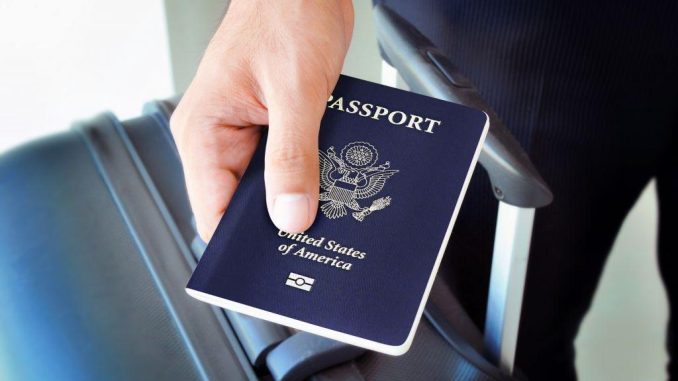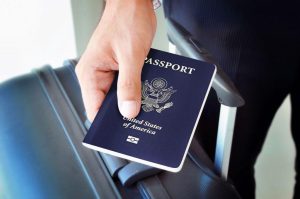
Italian immigration to America has played a significant role in shaping the cultural, economic, and social fabric of the United States. For centuries, Italians have sought new opportunities and a better life across the Atlantic, leaving a lasting impact on both their home country and their adopted nation. The journey of Italian immigrants, their struggles, and triumphs are a testament to the human spirit and the enduring pursuit of the American dream.
This article explores the history, advantages, eligibility criteria, and application procedures associated with Italian immigration to America, shedding light on a fascinating chapter in the story of America’s diverse heritage.
Overview

America has a rich history of immigration, with millions of individuals from around the world seeking new opportunities and a better life within its borders. The United States has long been considered a land of opportunity, attracting immigrants from diverse backgrounds.
The American immigration program is designed to regulate the entry of foreign nationals into the country. It is governed by various laws, policies, and procedures established by the U.S. government. The program aims to strike a balance between national security and the country’s economic and cultural interests.
The Immigration and Nationality Act (INA) is the primary legislation that governs immigration in the United States. It outlines the different categories of immigrants, including family-sponsored, employment-based, refugee, and diversity visa applicants. Each category has its own set of eligibility requirements and processes.
The United States Citizenship and Immigration Services (USCIS), a component of the Department of Homeland Security, is responsible for processing immigration applications, conducting interviews, and administering immigration benefits. USCIS plays a crucial role in ensuring the integrity and fairness of the immigration system.
Additionally, the U.S. Department of State manages the diversity visa lottery program, which offers a limited number of visas to individuals from countries with historically low rates of immigration to the United States.
Immigration to the United States has significantly shaped its cultural landscape, with people from various countries bringing their traditions, languages, and perspectives. It has played a pivotal role in the growth and development of the nation, contributing to its economic prosperity, technological advancements, and cultural diversity.
READ ALSO: Atlantic Immigration Program
Requirements of Italian Immigration to America
The requirements for Italian immigration to America have evolved over time, reflecting changes in immigration laws and policies. The specific requirements depend on the category of immigration and the purpose of the individual’s visit to the United States. Here are some general requirements for Italian immigration to America:
- Visa Categories: Individuals seeking to immigrate to the United States from Italy must determine the appropriate visa category for their specific situation. Common visa categories include immigrant visas for family-sponsored or employment-based immigration, nonimmigrant visas for temporary visits, and diversity visas through the Diversity Visa Lottery Program.
- Petitions and Documentation: For family-sponsored immigration, a U.S. citizen or lawful permanent resident must file a petition with the U.S. Citizenship and Immigration Services (USCIS) on behalf of the intending immigrant. Employment-based immigration typically requires a job offer from a U.S. employer who sponsors the immigrant. Documentation, such as birth certificates, marriage certificates, and passports, must be submitted to establish eligibility and familial relationships.
- Medical Examination: As part of the immigration process, applicants are generally required to undergo a medical examination by an authorized physician to ensure they meet the health requirements set by the U.S. government. The examination typically includes a physical examination, immunization verification, and screening for certain communicable diseases.
- Background Checks: All immigrants to the United States are subject to background checks to ensure they do not pose a security risk. These checks involve fingerprinting, criminal record screenings, and security clearances. Applicants are required to provide accurate and truthful information about their personal and immigration history.
- Affidavit of Support: In many cases, individuals immigrating to the United States are required to have a financial sponsor who guarantees to support them and prevent them from becoming a public charge. The sponsor must submit an Affidavit of Support, demonstrating that they have the financial means to provide for the immigrant’s basic needs.
- English Language Proficiency and Education: Depending on the immigration category, applicants may be required to demonstrate a certain level of proficiency in the English language. Additionally, educational qualifications and credentials may be assessed to determine eligibility for certain employment-based immigration categories.
- Consular Processing and Interviews: Once the necessary forms and documentation are submitted, applicants typically go through consular processing at the U.S. Embassy or Consulate in Italy. This process involves an interview to assess the applicant’s eligibility and intentions. The consular officer may ask questions about the applicant’s background, purpose of travel, and ties to Italy.
Eligibility Criteria of Italian Immigration to America
- Family-Sponsored Immigration: To qualify for family-sponsored immigration, an individual must have a close familial relationship with a U.S. citizen or a lawful permanent resident (green card holder) who is willing to sponsor their immigration. Eligible relationships typically include spouses, parents, children (both minor and adult), and siblings. The sponsoring family member must meet certain income and sponsorship requirements.
- Employment-Based Immigration: Employment-based immigration requires a job offer from a U.S. employer who is willing to sponsor the individual. The specific employment categories and eligibility requirements are outlined in the Immigration and Nationality Act (INA). The individual must possess the necessary skills, qualifications, or work experience required for the specific employment category.
- Diversity Visa Lottery: The Diversity Visa Lottery, also known as the Green Card Lottery, provides a limited number of immigrant visas to individuals from countries with historically low rates of immigration to the United States. Eligibility is determined by meeting the requirements of the lottery program, including being born in an eligible country and meeting the education or work experience criteria.
- Refugee or Asylum Status: Individuals who are fleeing persecution or have a well-founded fear of persecution in their home country may be eligible to seek refugee or asylum status in the United States. Eligibility is based on meeting the legal definition of a refugee or qualifying for asylum under U.S. immigration laws.
- Special Programs and Circumstances: There are additional immigration programs available for individuals with special circumstances or qualifications. These include programs for investors (EB-5 Immigrant Investor Program), individuals with extraordinary abilities (O-1 Visa), religious workers (R-1 Visa), and others. Each program has its own specific eligibility criteria and requirements.
- Health and Security Checks: All applicants for immigration to the United States, regardless of the category, are subject to health and security checks. These checks include medical examinations to ensure the applicant meets health requirements and background checks to assess any criminal or security concerns.
Application Procedures for Italian Immigration to America

- Determine Eligibility: Determine the appropriate immigration category based on your purpose of immigration, such as family-sponsored, employment-based, diversity visa, or other specialized programs. Ensure that you meet the eligibility criteria for the chosen category.
- File Petitions or Applications: Depending on the immigration category, you may need to file petitions or applications with the relevant U.S. government agencies. For family-sponsored immigration, a U.S. citizen or lawful permanent resident typically files a petition on behalf of the intending immigrant with the U.S. Citizenship and Immigration Services (USCIS). Employment-based immigration often involves the employer filing a petition with USCIS.
- Gather Required Documentation: Collect all necessary documents to support your application. This may include passports, birth certificates, marriage certificates, educational degrees or transcripts, employment records, financial documents, and other relevant evidence. Ensure that all documents are accurate, up-to-date, and properly translated if not in English.
- Complete Application Forms: Fill out the required application forms accurately and completely. The specific forms will depend on the visa category and can be found on the official website of the U.S. Department of State or USCIS. Follow the instructions provided with each form, paying close attention to the required supporting documentation.
- Pay Fees: Pay the necessary application fees, which vary depending on the visa category. The fee payment methods and instructions will be outlined on the official website of the relevant U.S. government agency. Keep copies of payment receipts for your records.
- Medical Examination: Schedule and undergo a medical examination with an authorized physician. The medical examination is typically required for immigrant visa applicants and is aimed at ensuring that applicants meet the health requirements set by the U.S. government. The authorized physician will provide you with the required medical forms and documentation.
- Attend Visa Interview: If required, attend a visa interview at the U.S. Embassy or Consulate in Italy. The interview is an opportunity for consular officers to assess your eligibility, verify your documentation, and evaluate your intentions to travel to the United States. Be prepared to answer questions about your background, purpose of travel, and ties to Italy.
- Biometrics Appointment: In some cases, you may be required to attend a biometrics appointment to provide your fingerprints, photograph, and signature as part of the background check process. The appointment will be scheduled by the U.S. government agency handling your application.
- Await Application Processing: After submitting your application, supporting documents, and attending any required interviews or appointments, your application will undergo processing by the relevant U.S. government agency. The processing times can vary, so it is important to check the estimated processing times and status updates on the official websites.
- Receive Decision and Travel Documents: Once your application is processed, you will receive a decision on your immigration status. If approved, you will be issued the appropriate visa or travel document, such as an immigrant visa or a green card (lawful permanent resident card).
Conclusion
As the United States continues to welcome immigrants from around the world, the story of Italian immigration serves as a reminder of the profound impact and valuable contributions that immigrants make to the tapestry of American life. Italian immigration to America remains an integral part of the nation’s history, identity, and ongoing pursuit of progress and inclusivity.
Leave a Reply